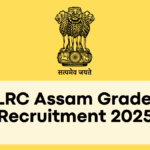Can you really pay zero tax on an annual income of ₹12 lakh in India? Yes—but it depends entirely on how you structure your income and make use of the available exemptions and deductions. With the 2025 tax filing season approaching, it’s critical to understand both the old and new tax regimes, how they apply to your earnings, and what you can do to legally reduce your tax liability to zero.
This article breaks down the methods, rules, and strategies you need to know to potentially pay zero tax on ₹12 lakh of income for Assessment Year (AY) 2025–26 (Financial Year 2024–25).
Table of Contents
Zero Tax on ₹12 Lakh Income?
Item |
Details |
|---|---|
Total Income |
₹12,00,000 |
Tax Goal |
₹0 Tax Payable |
Possible Under |
Old Tax Regime (with full deductions) |
New Regime |
Not feasible for zero tax on ₹12L (limited deductions) |
Best Strategy |
Max out deductions: 80C, 80D, HRA, NPS, Standard Deduction |
Assessment Year |
AY 2025–26 |
Official Portal |
How to Pay Zero Tax on ₹12 Lakh Income
Old vs New Tax Regime – Know the Difference
The Old Regime allows multiple exemptions and deductions, including under sections 80C, 80D, HRA, LTA, and more.
The New Regime has lower tax rates but removes most deductions, offering only a standard deduction and a few limited claims.
For individuals earning ₹12 lakh, the old regime offers more scope for tax savings—provided deductions are claimed fully.
Sample Calculation Under Old Tax Regime
Let’s break down a scenario where someone earning ₹12 lakh annually can reduce their taxable income to zero:
Step-by-Step Deduction Plan:
-
Standard Deduction: ₹50,000
-
Section 80C (PF, ELSS, PPF, LIC, tuition fees, home loan principal): ₹1,50,000
-
Section 24(b) (Home Loan Interest): ₹2,00,000
-
Section 80D (Health insurance premium for self and family): ₹25,000
-
HRA Exemption (depends on salary structure and rent paid): Up to ₹2,00,000
-
NPS (Section 80CCD(1B)): ₹50,000
-
Education Loan Interest (Section 80E) or Other Deductions: ₹1,00,000
-
Donations (Section 80G): If applicable, partial deductions
Total Possible Deductions:
₹7.75 lakh to ₹8 lakh (varies based on rent paid, loan, and actual investments)
Taxable Income After Deductions:
₹12,00,000 – ₹7,75,000 = ₹4,25,000
Apply rebate under Section 87A (available if taxable income is below ₹5 lakh):
Final Tax Payable = ₹0
Can This Be Done Under New Tax Regime?
No, the new tax regime for AY 2025–26 does not support enough deductions to bring ₹12 lakh down to ₹5 lakh. Only these limited deductions are available:
-
Standard Deduction of ₹50,000
-
Employer’s contribution to NPS (if structured accordingly)
-
Family pension income relief
Even with these, the effective taxable income remains too high to qualify for Section 87A rebate.
Who Should Opt for Old Regime to Save Tax?
You should stick to the old tax regime if you:
-
Have housing loan (principal + interest)
-
Invest in ELSS, PPF, NPS
-
Pay life or health insurance premiums
-
Pay rent and can claim HRA
-
Have tuition fee expenses or claim 80E
Smart Tax Planning Tips for FY 2024–25
Max Out Section 80C Early
Invest the ₹1.5 lakh through a combination of:
-
ELSS funds for market exposure
-
PPF/EPF for fixed returns
-
Life insurance for risk cover
Use NPS for Extra ₹50,000
Voluntary investment in NPS qualifies for additional deduction under Section 80CCD(1B)—beyond 80C.
Claim HRA Wisely
If you live in a rented house and receive HRA, structure your salary and rent payments carefully. Keep rent receipts, PAN of landlord (if rent > ₹1 lakh annually), and proof of payment.
Don’t Miss Health Insurance Deductions
Even a basic ₹25,000 health insurance policy (80D) for you and your family reduces tax. If you insure parents too (especially senior citizens), this can go up to ₹75,000.
Common Mistakes to Avoid
Ignoring the Regime Choice
By default, salaried individuals are shifted to the new regime. To opt for the old regime, you must file Form 10IEA before filing your return.
Last-Minute Investments
Planning in March leads to poor investment decisions. Start early to make informed, tax-saving choices.
Misunderstanding Section 87A
This rebate applies only if taxable income is up to ₹5 lakh—not gross income. Many confuse it with gross annual salary.
FAQs
What is Section 87A and how does it help?
Section 87A provides a rebate of up to ₹12,500 if taxable income is ₹5 lakh or less. This can make your final tax liability zero.
Can I switch regimes every year?
Salaried individuals can switch between old and new regime every year. Business professionals can switch only once unless they cease business.
Is HRA available under new regime?
No. HRA exemption is available only under the old regime.
Is it mandatory to file ITR if I have zero tax?
Yes, if your gross income exceeds the basic exemption limit (₹2.5 lakh under old regime or ₹3 lakh under new), you still need to file ITR—even if tax payable is zero.
Can I get zero tax if I don’t have a housing loan?
Yes, but you’ll need to use other deductions like 80C, NPS, 80D, and HRA fully. Without housing loan, the room to reduce taxable income becomes narrower.
Click here to learn more





